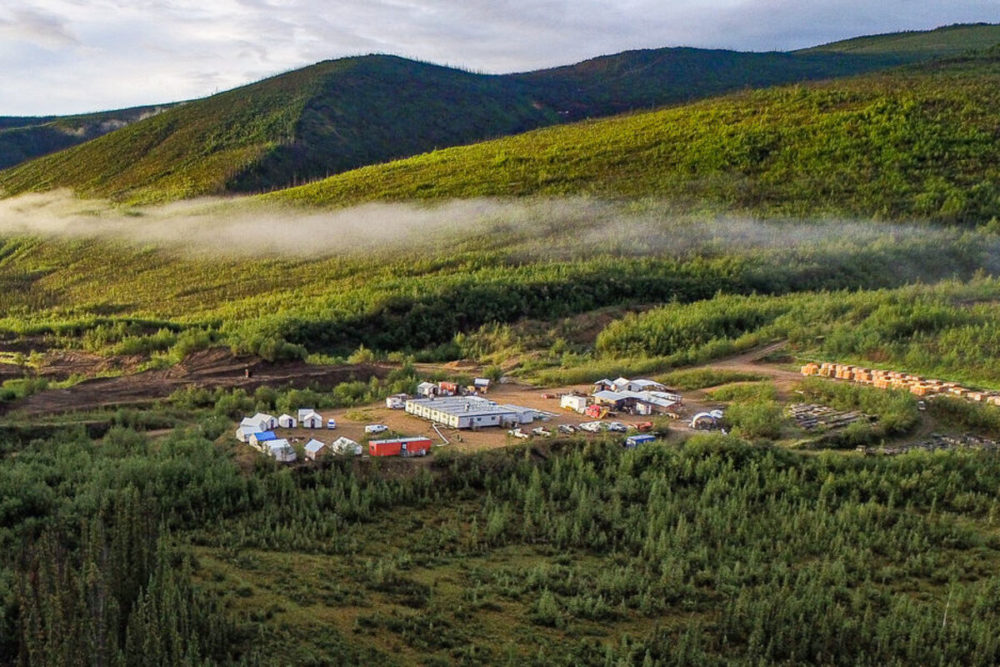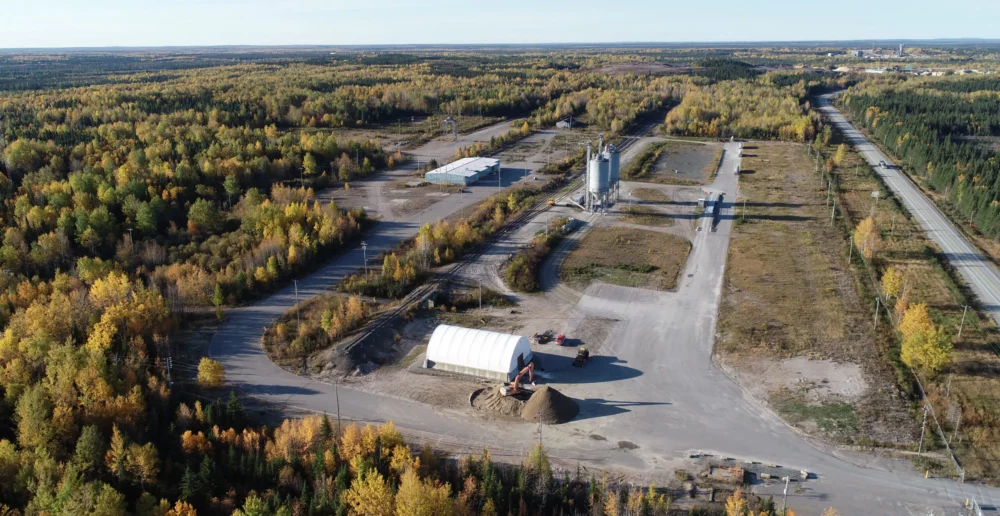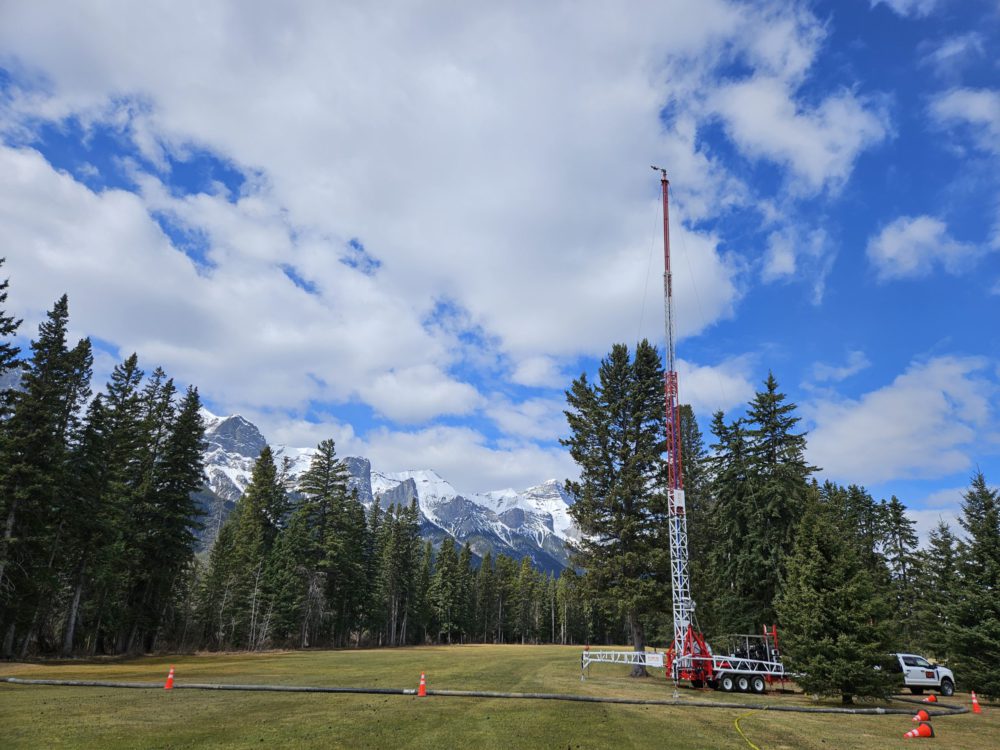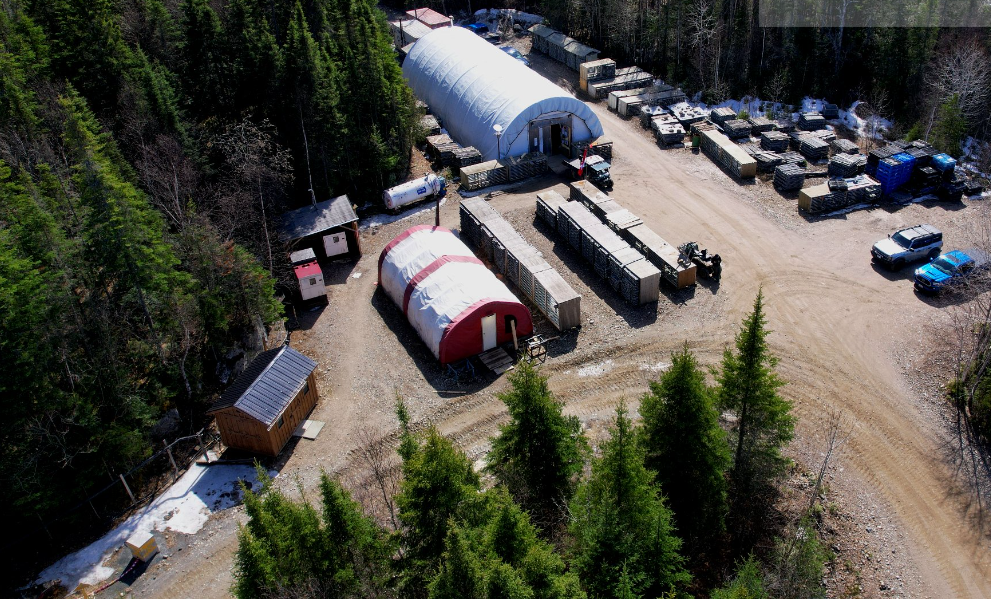Ontario has Prospects Galore
ntario has been blessed with an abundance of natural resources, including untold mineral potential. For more than a century, word-class mineral discoveries in this province have brought development and prosperity, along with scientific and technological advances, enabling Ontario’s economy to evolve through innovation. From the earliest times, mining spurred on infrastructure development, enabled more equitable regional development and sustained a variety of support industries. These industries include obvious ones like manufacturing, but also perhaps some unexpected ones like education and financial services.
Today, mining continues to be an economic pillar of Ontario. It is well positioned to grow its contribution to our economy. Though the number fluctuates with various commodity price changes, mining in Ontario had revenues of $6.3 billion in 2009 (down by about 30% due to the global economic downturn). The industry provides a major boost to our financial sector, with the Toronto Stock Exchange (TSX) currently being the leading global mining exchange, listing 57% of the world’s public mining companies and raising more mining equity capital than any other exchange.
Historically, Ontario has taken advantage of spikes that occurred as a result of US industrialization, the post-Second World War rebuilding of Europe and the industrialization of Japan. We find ourselves in another of these defining moments of immense opportunity. Large nations such as China, India and Brazil are experiencing mass urbanization and rapid development. These nations are determined to narrow the gap between Western and developing nation lifestyles. To do that, mineral products are essential.
The next 20 years present a window of opportunity for a jurisdiction with the geology, the environmental protections, the safety record and the government policies to build a deliberate and well planned strategy for new mines. Building on our global reputation in mining and our desire to be leaders in the green economy, Ontario’s natural resource potential can be turned into sustainable wealth.
What this represents for Ontario is a narrow window of opportunity, both to take advantage of the vast new markets for our commodities, but also to redefine our competitive position in the new economic and industrial landscape that is being formed. This new landscape will allow Ontario to align its economic and environmental goals. Waiting to act is akin to drawing the curtains on the window of opportunity before us, and quite possibly losing our control over our future resource policy to much more powerful and strategic global players.
Mining in Ontario
Mining is an industry that is active in all parts of the province. More than 50 diverse communities, including Windsor, Goderich, Perth, Midland, Sudbury, Timmins, Red Lake, Kirkland Lake, Marathon, North Bay and Attawapiskat all have mining as an important player in their local economies. In some parts of the province, especially in the Far North, mineral resource development is critical to creating employment and entrepreneurial spin-off opportunities. As the largest private sector employer of Aboriginals in Canada, mining makes a significant contribution to the well-being and development of remote communities.
Partially due to its exceptional level of productivity (each employee produces more than $500,000 worth of mineral products annually), the industry only employs about 17,000 people directly. However, the total for direct and indirect employment is close to 100,000, while the mineral sector cluster employs about 200,000 people in the province. It annually provides an estimated $6.6 billion in personal and corporate income and $1.5 billion in government revenues.
According to a study1 by University of Toronto economists Peter Dungan and Steve Murphy, even the addition of a single mine can have a profound positive impact on the Ontario economy. The combined direct, indirect and induced effects of a single “representative mine” are extremely large, with the output of that single mine contributing $278 million to Ontario’s economy and $84 million to government revenues annually. Moreover, the study demonstrates that mining is an activity which has, in the economic sense, less “leakage” than other sectors. A large percentage of the benefits of the economic development of a mine stay local, fuelling induced economic activity that is difficult to quantify, but visible in communities with successful mining operations.
Other tangible benefits are a direct result of modern mining’s commitment to the principle of corporate social responsibility. Mining continues to be among the safest industries in Ontario. In 2009, it was the second safest industry among Ontario’s industrial sectors, three times safer than forestry, construction and health care, and four times safer than agriculture and transportation. Mining companies invest in the well-being of their communities – for instance, by helping to pay for roads, electrical grids, environmental protection programs, medical centres, sports facilities and community centres. They also fund schools, universities, colleges and research facilities – building their competitive advantage by supporting centres of creativity and innovation. The industry invests in its – and by extension, our – future in other ways as well – $1.7 billion annually in construction, equipment, exploration and research & development, $2,300 annually in safety training per employee, $130 million in environmental protection and more.
Despite the recent economic downturn, if we look back two years and forward about three, an incomplete list of investments will show that Ontario mining capital expenditures are more than $8.5 billion – this is in addition to operating expenditures and exploration activities. What other sectors in Ontario are making this level of investment? Clearly, this is an indication of the industry’s belief in Ontario’s potential. It is also a reflection of the industry’s bullish anticipation of a period of heightened demand for its products in the near future.
New Window of Opportunity
Although globalization has been reshaping business realities and policy imperatives for some time now, many analysts agree that in the next 20 years we will experience commodity demand on par with, and likely exceeding, previous historical spikes. “China needs to build three cities larger than Sydney (or Toronto) every year until 2030 to accommodate rural to urban migration”.1 “The global economic recovery is putting upward pressure on commodity prices, suddenly making mines in remote Northern areas viable”.2 Small deposits are only economic in high demand periods. Remote deposits, due to the infrastructure costs, are equally only viable when demand can offset these costs.
However, we also know that there are moments of immense opportunity when demand spikes due to significant geopolitical and economic forces. Using copper as an example, we see the impact on price during these spikes. Arguably we have entered such a defining period. If it does not wish to be left behind, Ontario must be decisive and act fast to grasp the tremendous opportunities becoming available on global markets and to chart our future in accordance to Ontarians’ values and aspirations.
How Can Ontario Benefit from a Historic Opportunity?
To benefit from today’s global economic realities, Ontario needs to set clear, strategic targets for building up its commodity reserves and establishing more mines. Ontario’s roots in the industrial economy complements our emerging green economy. Without minerals and metals we wouldn’t have wind turbines, solar cells, hybrid vehicles and indeed most of the building blocks of modern society. Further, Ontario’s environmental protection, safety standards and international reputation in mi
ning allow it to capitalize on its geologic potential like few other jurisdictions.
We are fortunate that Ontario continues to yield staggering mineral finds. Most recently, the discovery of one of the world’s largest untapped deposits of chromite in the “Ring of Fire” area of Northern Ontario offers untold potential, suggesting parallels to China’s dominant position with respect to rare earth minerals. The world production of chromite – used to make stainless steel – is now 22.4 million tonnes per year, with South Africa and Zimbabwe contributing 70% of this resource. Annual production of chromite from the new deposits in Ontario could be as much as 10 million tonnes per year when supplying the Asian markets (China consumes 50% of world production of chromite). The overall resource estimate indicates that there is enough chrome ore to supply the North American market for the next 150-200 years.1
Rare earth element minerals are among the non-traditional metals being targeted for exploration in Ontario. Smart phones, hybrid cards, televisions, super conductors, medical diagnostic devices and numerous other applications all contain rare earth elements. Worldwide demand for these elements is expected to outstrip supply by 40,000 tonnes annually unless new sources are developed.2
China, which functions on the basis of aggressive five year plans, produces about 95% of the global supply and has 37% of proven reserves. They recently announced a cut to rare earth exports by 35% in 2011, following an export reduction cut in the second half of 2010. They are also using this dominance to strengthen their emerging lead in many alternative energy technologies.
Canada is home to 56% of the potential rare-earth element deposits outside of China; Quebec, with 41 exploration projects, and Ontario, with 28, has the best potential.2 A rare earth mineral sector could form the foundation for new manufacturing in Ontario for green and futuristic products.
In addition to investing in domestic and overseas natural resources, the Chinese made direct investments worth a total of $2.4 billion in 420 overseas enterprises in 75 countries and regions, (mining being among the biggest target sectors). It is clear that foreign interests and some ENGOs have considerable resources and ability to control resource development in Ontario. The government cannot let this occur and further must ensure all Ontarians benefit from our rich endowment.
How do we get there?
The way to turn our natural resource potential into sustainable wealth on a significant scale is for Ontario to adopt a deliberate strategy for promoting new mines.
The stakes have become higher. It is no longer acceptable to be complacent about having a well-established mining industry. The world has changed rapidly in its attitude to economic development and nation building, not just in places with well-established mineral industries like Australia and Canada, but even in countries where development is desperately sought and unequivocally welcomed.
The world needs the products of mining. Mines will be built and operated. What better place to mine than in Ontario, with its responsible environmental protection, world class safety record and desire to participate in new and emerging technologies?
The existing 20-year window of opportunity can be spent on permitting and approvals, or it can be spent opening mines. Our environmental and safety record will not be placed in jeopardy by compressing development timelines and aligning interests to ensure province, industry and community all benefit.
Recommendations
- Establish a target number for new mines in Ontario.
- Ontario should balance conservation targets with development targets. We are poised to develop new mines in the Ring of Fire and elsewhere if a proactive, government-led effort is continued.
- Compress development timelines. In Ontario it can take years, or even decades, to develop a mineral deposit into a producing mine – typically a 10-15 year development horizon for a base metal mine. To take advantage of our current window of opportunity, Ontario can no longer afford those timelines. An engaged civil service, working aggressively with the industry and the federal government, could cut these timelines in half.
- Develop a rare earth elements strategy.
- Bringing our small deposits into production will provide Ontario with inputs necessary in the manufacture of new technology.
- Provide for comprehensive and long-range geological data collection and mapping.
- Allow local municipal and First Nation communities to have a greater share of the benefits of mining.
- The government must maintain the current mining tax rate. It is vital to attract investment to Ontario. However, shifting the allocation of those existing revenues would allow greater benefit to the host community. In addition, any new mines that will become subject to the mining tax could see a greater portion of that tax allocated to the host community.
- Use the Northern Ontario Heritage Fund to spur the necessary transportation and power infrastructure needs for mining development.
- Allow smaller and start-up mines to benefit from the Northern Industrial Electricity Rebate and the recent change to the Global Adjustment calculation.
- Lower Workplace Safety and Insurance Board premiums to reflect the safety record of the mining industry.
- Implement environmental regulation that protects human health.
There is significant scientific uncertainty and technological limitations with regards to Regulation 194/419 and the Toxic Reduction Act. Although implementation of these two policies will continue to consume significant government and industry resources, it will not produce readily foreseeable benefits to further protecting the environment.
Information for this special report provided by the Ontario Mining Association. 1.Source: CEMI/Rio Tinto presentation (Statistic derived from analysis of the United Nations World Urbanization Prospects, The 2007 Revision Population Database) 2.Conference Board of Canada, December 17, 2011 (www.conferenceboard.ca/e-library/abstract.aspx?=did=3949) 1.Source: Fall/Winter 2010 issue of the Ontario Prospector. 2.Dave Simms, CBC media, Feb 17/10.





Comments